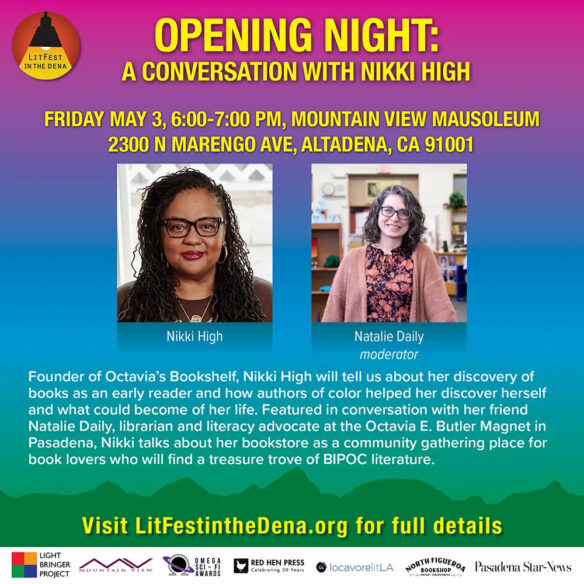(1) GLASGOW 2024 DELAYS BUSINESS MEETING AGENDA. The WSFS Standing Rules required publication of this year’s Business Meeting Agenda by July 17. However, Glasgow 2024 today announced that agenda “will be delayed until Friday, 19th July 7pm (BST/UTC+1)”. X.com thread starts here.
Glasgow 2024 has received 50 items, including new business and items passed on from the prior Worldcons. And they have put up this chart to justify the delay in producing the agenda.

In the meantime, File 770 has published the text of more than 20 of these proposals. Here are the links.
- Motion to Abolish the Retro Hugos Submitted to 2024 Business Meeting
- WSFS 2024: Motion to Add Human Rights and Democracy Standards to Worldcon Site Qualifications
- WSFS 2024: Three Resolutions
- SHORT TITLE: APOLOGY RESOLUTION
- SHORT TITLE: CHENGDU CENSURE RESOLUTION
- SHORT TITLE: MAKE THEM FINALISTS RESOLUTION
- WSFS 2024: Cleaning Up the Art Categories
- WSFS 2024: Meetings, Meetings, Everywhere
- WSFS 2024: Transparency in Hugo Administration
- WSFS 2024: Irregular Disqualifications and Rogue Administrators
- WSFS 2024: Independent Hugo Administration
- WSFS 2024: No Illegal Exclusions
- WSFS 2024: When We Censure You, We Mean It
- WSFS 2024: And The Horse You Rode In On
- WSFS 2024: Three Standing Rules Change Proposals
- SHORT TITLE: “NO, WE DON’T LIKE SURPRISES, WHY DO YOU ASK?”
- SHORT TITLE: “STRIKE 1.4”
- SHORT TITLE: MAGNUM P.I.
- Two More Proposed WSFS Constitutional Amendments for 2024
- SHORT TITLE: MISSING IN ACTION
- SHORT TITLE: THE WAY WE WERE
- WSFS 2024: Popular Ratification
- WSFS 2024: Site Selection by the Worldcon Community
- “WSFS Mark Protection Committee Draft Amendments”
- SHORT TITLE: REQUIRED LICENSE AGREEMENT
- SHORT TITLE: HUGO ADMINISTRATION AND SITE SELECTION MONITORING
- SHORT TITLE: MPC PROCEDURES
- A Resolution by Chris J. Garcia
- “From The New World” Proposal Series: Including Membership, Business Meeting, Finance, Site Selection, Responsibility, Hugo Awards, Translation, and So On, by Zimozi Natsuco
- “Loamblood” by Phoenix Alexander — read by the author
- “Surgery for Dummies” by F.J. Bergmann — read by Jean-Paul Garnier
- Carpe Diem mixes sport with alternate history.
- Saturday Morning Breakfast Cereal has an excuse for doomscrolling.
- Non Sequitur shows creators have been getting scammed this way for a long time.
- Thatababy stages a contest between superheroes.
- Bizarro shows how robot justice will work.
- Speed Bump commemorates the first art donor.
- Thatbaby adds a feature to long movies.
- Rhymes with Orange is there when a robodog does what doggies do.
Also along the way File 770 has published these drafts. Whether they have been submitted, or their final wording, is not known at this time.
(2) LAST DAYS TO VOTE FOR THE HUGOS. There are only four days left to vote in the 2024 Hugo Awards and to download this year’s Hugo Voting Packet.
Voting closes at 20:17 GMT on 20 July because that will be 55 years *to the minute* since Neil Armstrong and Buzz Aldrin first landed on the moon in 1969!
Instructions about how to vote and the way to download the Hugo Voting Packet are on the Glasgow 2024 website.
(3) COMMUNITY ANSWERS OCTAVIA’S BOOKSHELF’S CALL. “Black Woman-Owned Bookstore Octavia’s Bookshelf Is Getting Closer And Closer To Funding Goal To Keep Doors Open” reports Blavity. At this writing, Octavia’s Bookshelf has raised $83,780 of the $90,000 goal.
….According to Pasadena Now, the Black woman-owned business Octavia’s Bookshelf was founded by Nikki High, a former corporate communications employee at Trader Joe’s who left corporate America to accomplish one of her biggest goals: owning a bookstore. The name of her shop was inspired by Octavia Butler, who was known for her science fiction novels. When she opened her doors in February 2023, she was immediately embraced by her neighborhood and got more than enough support to move into a bigger space.
Due to traffic slowing down in the store, High is asking her community and the general public for help to remain in business; she set up a GoFundMe page….
…Due to lack of funding, she was forced to cut the shop’s regular events, group discussions, children’s readings and workshops, but she hopes to be able to offer these services again soon once she raises enough money.
Despite the hurdles she faces, High is unwilling to throw away her dreams.
“I still know that this is a viable business,” High told Pasadena Now, “and this space is crucial to our community.”
(4) LEGGO MY LEGO. “Get bricks quick: collectible Lego sets fuel growing black market” says the Guardian.
A black market for highly valuable Lego sets is being built brick by brick, and authorities are trying to knock it down.
Lego sets are highly sought after, by kids and their parents as well as adult collectors.
But it’s not all fun and games. Bad actors who know the resale value of these sets are increasingly cashing in, while law enforcement aims to bust such Lego theft rings.
Police in Oregon last week recovered 4,000 stolen Lego sets worth more than $200,000, according to law enforcement. Ammon Henrikson, 47, the owner of a retail store called Brick Builders in Eugene, was arrested and accused of knowingly purchasing the allegedly stolen goods for a fraction of their retail price and then reselling them, a local CBS channel reported….
… Two people were arrested in Los Angeles last month in connection with more than 2,800 stolen Lego sets. In April, California police arrested three men and a woman after discovering stolen Lego sets worth a combined $300,000. Some of the stolen sets included the 921-piece Millennium Falcon, typically priced around $85, the 6,167-piece Lord of the Rings Rivendell set, worth $500, and the 1,458-piece Porsche 911 set, worth $170.
Meanwhile, overseas, French police announced in 2021 that they had begun building a case against an international gang of toy thieves specializing in Lego….
(5) CLARION WEST MATCHING. The Clarion West Writers Workshop can leverage your donation this week. More information here.
The Sherman Family Foundation has offered a Week Five Matching Challenge, doubling any donations made this week up to $2,000! Donations made to Clarion West support free and low-cost programming for writers and readers year-round.

(6) SIMULTANEOUS TIMES. Space Cowboy Books presents episode 77 of their monthly podcast “Simultaneous Times” with Phoenix Alexander & F.J. Bergmann.
Stories featured in this episode:
Music by Phog Masheeen. Theme music by Dain Luscombe


(7) A. HEATHER WOOD (1945-2024). Publishing pro and folk singer A. Heather Wood died at Stony Brook Memorial Hospital on July 15 at the age of 79. At one time she was assistant to Tor’s President and Publisher Tom Doherty, and a consulting editor for Tor Books. She was also well-known in the folk music community as part of The Young Tradition, a 60s English group.
We applied a tiny bit of that musical talent on Noreascon Three’s (1989) program SF Tonight, where I played Ed McMahon to Tappan King’s Johnny Carson, and Heather Wood was our kazoo-playing answer to Doc Severinsen.
She also was known as part of World Fantasy Convention’s “Musical Interlude,” which featured pros singing in a folk revue.
Her website, which lists her many accomplishments, is here.
(8) IVAN GEISLER (1944-2024). [Item by Jeanne Jackson.] Ivan Geisler, longtime member of the Denver Area Science Fiction Association, passed away July 2, 2024 of congestive heart failure and old age.
I was first informed this afternoon by Sherry Johnson, his ex-wife. Although Ivan was quickly found by his neighbors after his passing, and his dog Brownie returned to the shelter Ivan had adopted her from, there had been some difficulty locating contact information for friends and relatives.
According to Sherry, memorial arrangements have not yet been organized. As Ivan was a veteran of the United States Army, it is likely the Veterans’ Administration will be involved in his funeral.
Ivan joined DASFA over 30 years ago. He was a lifelong reader of science fiction and fantasy, and also an avid amateur astronomer—he was an active member of the Denver Astronomical Society long before he found his way into DASFA.
(9) TODAY’S BIRTHDAY.
[Written by Paul Weimer.]
July 16, 1928 — Robert Sheckley. (Died 2005.)
By Paul Weimer: I came to Robert Sheckley’s work through an oblique angle. Somehow, through all of the reading I did in the late 70’s and early 80’s, I missed or didn’t recognize, his short story work (although it’s dollars to donuts I came across a story of three in the many anthologies I read during that period. (And a check in the writing of this shows a couple of Sheckley stories in 100 Great Science Fiction Short Short Stories). But I didn’t recognize his work and his genius and his skill until 1992.

Yes, it wasn’t until the movie Freejack came around that I started looking for Sheckley’s work specifically, since the movie proudly announced in its credits that it was based on “Immortality, Inc. by Robert Sheckley”. Yes, this is the movie where Emilio Estevez is a car driver transported to the future, with Mick Jagger (!) of all people as the major antagonist.
The name sounded familiar even so, and so, as was my practice at the time (Total Recall leading me to Philip K. Dick in similar fashion), I decided that I needed to investigate his work, starting with Immortality, Inc. The novel was very different than the movie by a long show, but I was immediately hooked on his writing.
I found his work sharp, twisty, clever, devilishly entertaining, and especially for his short stories, with a sting in the tail. It was no wonder to me that his work has been so adapted so frequently, and with such great effect. And while science fiction is generally not explicitly in the prediction business, “The Prize of Peril” pretty accurately and sharply predicts and shows the consequences of television devoted and focused on Reality Television for clicks. “The Perfect Woman” shows the consequences of wanting the perfect mate, straight from the factory, and the consequences of a lack of quality control.
My favorite Sheckley story might surprise, but it is “Death Freaks” from the “Heroes in Hell” shared world verse. With the ability of throwing anyone who is anyone into their shared world version of Hell, the editors got a story from Sheckley involving the Marquis de Sade, Baudelaire, Lizzie Borden, Jesse James, and an 8th Century BC Greek Hoplite. Sheckley, perhaps out of all of the authors in the series, best “understood the assignment” and let his imagination run wild. It’s a story that’s a lot of fun and full of the unexpected, entertaining all along the way. That’s what Sheckley could, and did do, with his fiction.
(10) COMICS SECTION.
(11) LADY DEADPOOL. “New ‘Deadpool & Wolverine’ Trailer Teases Even More of Lady Deadpool” promises Yahoo!
Ten days ahead of the film’s release, Shawn Levy’s Deadpool & Wolverine has a new trailer and TV spot.
Set to the tune of Toni Basil’s “Hey Mickey,” one of the first shots in the trailer shows the mysterious Lady Deadpool’s red boots and up past her signature belt to show the ends of blonde hair without landing on her face.
And a week ago was this: “Deadpool & Wolverine & The Bachelorette”.
Everyone seemed to like the Deadpool Bachelorette spot last night but can we talk about the episode? Thought Jenn made some strong choices, except for sending my countryman Brendan packing. Marcus is easy on the eyes, Grant was a little much and the day trading thing, but I get it. Two Sams will get confusing so slightly leaning towards Sam N. Jenn’s mom might have been the highlight and Melbourne, Australia, felt like a Hugh shout out so bit of a lowlight there. Overall, great start. What was I talking about again?
(12) FOR MONSTER TOURISTS. Atlas Obscura lists “11 Museums Dedicated to Monsters”.
Monsters have roamed the human consciousness as long as there has been one, from tales around the campfire, to the tomes of antiquity, to the modern cineplex. And sometimes those monsters leap off the page or the screen, and out of our imaginations. Sightings of cryptids and other frightful creatures have spanned millennia, often taking place in the darkest corners of the world. Luckily there are lots of ways to get to know these fantastical creatures—especially when enthusiasts create museums or exhibits dedicated to their lore….
…In Point Pleasant, West Virginia, is a museum dedicated to the state’s most widely known cryptid: the Mothman. The only collection dedicated to the half-moth, half-man creature, the Mothman Museum celebrates this harbinger of misfortune, who has been spotted in Appalachia on and off since 1966. Much further in the past, stories of massive sea monsters off the Icelandic coast have stricken fear into the hearts of sailors. The Skrímslasetrið in Bíldudalur, Iceland, covers the history of these encounters. According to the museum, two of the monsters most endemic to Iceland’s waters are the hafmaður (Sea Man) and the skeljaskrímsli (Shell Monster), but there are more. From a four-legged beast that terrorized 18th-century France to an amphibious water demon in Japan, here are a few of our favorite places to get up close to monsters in relative safety…
(13) READY FOR HER CLOSE-UP. “Gnatalie is the only green-boned dinosaur found on the planet. She will be on display in L.A.” announces NBC News.
The latest dinosaur being mounted at the Natural History Museum in Los Angeles is not only a member of a new species — it’s also the only one found on the planet whose bones are green, according to museum officials.
Named “Gnatalie” (pronounced Natalie) for the gnats that swarmed during the excavation, the long-necked, long-tailed herbivorous dinosaur’s fossils got its unique coloration, a dark mottled olive green, from the mineral celadonite during the fossilization process.
While fossils are typically brown from silica or black from iron minerals, green is rare because celadonite forms in volcanic or hydrothermal conditions that typically destroy buried bones. The celadonite entered the fossils when volcanic activity around 50 million to 80 million years ago made it hot enough to replace a previous mineral….
(14) IT’S A TWISTER AUNTIE EM! “What Twisters gets right — and wrong — about tornado science” opines Nature
When Hollywood producers showed up a few years ago at Sean Waugh’s office, he couldn’t wait to show them his thunderstorm-tracking equipment. Waugh, a meteorologist at the US National Severe Storms Laboratory in Norman, Oklahoma, is a big fan of the 1996 film Twister, which stars Helen Hunt and Bill Paxton as leaders of a tornado-chasing research team. And now, Hollywood was asking Waugh his opinion on how the science in the next film in the Twister franchise should look.
On 17 July, when the film is released internationally, the world will see how Waugh’s recommendations panned out. Like its predecessor, the new Twisters film focuses on characters who are storm chasers: Daisy Edgar-Jones plays a researcher traumatized by past weather disasters and Glen Powell a social-media star racing for footage of the biggest and baddest tornadoes. But science has an even bigger role in the plot of the new film than it had in the original, say Waugh and other researchers who worked as consultants for Twisters. It not only shows advanced radar data and highlights links between climate change and tornadoes, “it’s an incredible opportunity to inspire the next generation of scientists”, Waugh says….
(15) VIDEO OF THE DAY. Ryan George’s “Battlefield Earth Pitch Meeting” tells why the movie was made – not that you didn’t already know.
[Thanks to Kathy Sullivan, Mike Kennedy, Andrew Porter, Anne Marble, Joe Siclari, Jeanne Jackson, John King Tarpinian, Chris Barkley, Cat Eldridge, SF Concatenation’s Jonathan Cowie, Steven French, and for some of these stories. Title credit belongs to File 770 contributing editor of the day Niall McAuley.]














